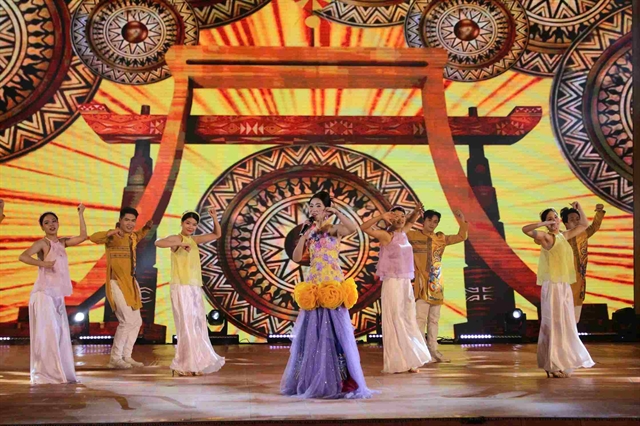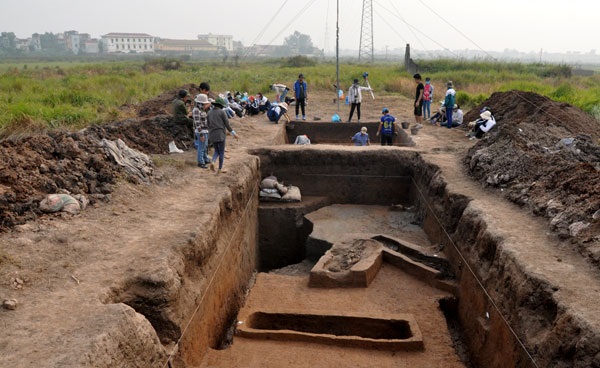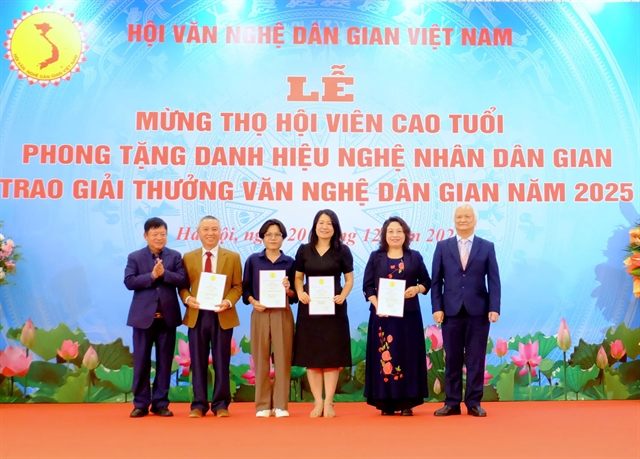 Life & Style
Life & Style
.jpg)
Hà Nội’s Department of Culture, Sports and Tourism has proposed two conservation plans for the Eastern area of the prehistoric archaeological site Vườn Chuối (Banana Gardens)

|
| UNEARTHED: Archaeologists excavate at the Vườn Chuối site. Hà Nội’s Department of Culture, Sports and Tourism has proposed two conservation plans for the Eastern area of the pre-historic archaeological site. — Photo khaocohoc.gov.vn |
HÀ NỘI — Hà Nội’s Department of Culture, Sports and Tourism has proposed two conservation plans for the Eastern area of the prehistoric archaeological site Vườn Chuối (Banana Gardens).
The proposals aim to conserve the site, located in Hoài Đức Distrct's Kim Chung Commune, without interrupting the city’s construction of outer ring roads No 3 and No 5.
Plan 1 is to carry out conservation research on the 6,000sq.m Eastern area, which amounts to half of the Vườn Chuối site.
The area also needs to be listed as one of the city’s relic sites. Once it is put on the list, further steps in its preservation and the promotion of its historical values will be made. At the same time, before handing over the site to the city as part of the land clearance for the city’s construction of the outer ring roads, archaeologists will excavate and relocate objects found in the Western area of the archaeological site.
Plan 2 is to conduct conservation research on the 6,000sq.m Western area of the site, aiming to preserve the entire Vườn Chuối archaeological site, which covers an area of about 12,000sq.m.
The whole archaeological site will need to be put into the list of Hà Nội’s relic sites. The next steps will be to preserve and promote the historical value of the site, and continue the excavation, as well as build relevant cultural works that can connect and promote the archaeological site.
Regarding the construction of the ring roads No 3 and 5, the Plan also proposes building an overpass above the archaeological site.
Although the culture department has provided two conservation plans, they are pushing for Plan 1.
They believe this plan can ensure harmony between conservation and urban development.
“This plan will be in accordance with the purposes of conservation, research and promoting the value of the relics, at the same time it doesn’t affect the construction of urban transport infrastructure.
“The researchers believe that the Eastern area has much historical, cultural and scientific value. It is enough for the entire Vườn Chuối archaeological site,” it wrote.
Archaeologists confirmed that, at present, the area still has many excavated objects that can help to reveal a lot about the history of the area.
Plan 2 is to ensure the preservation of the entire site but will partly affect the ring road construction as it requires building an overpass.
Both proposals were made by the consensus of the scientists and archaeologists involved.
Earlier, the culture department assigned the Management Board of Hà Nội Historic Relics Tourist Attractions in collaboration with the Institute of Archeology to conduct archaeological excavation in an area of 150sq.m at the Eastern area of the Vườn Chuối archaeological site in 2020 and 2021.
During the excavation, archaeologists found several ancient artefacts that belonged to the residents of Phùng Nguyên (2000-1500BC), Đồng Đậu (1500-1000BC), Gò Mun (1000-600BC) to pre-Đông Sơn and Đông Sơn (700BC-AD100) eras.
Vườn Chuối is Hà Nội’s largest prehistoric archaeological site spread over Lai Xá and Kim Chung communes in Hoài Đức District. First discovered in 1969, there have been eight excavations carried out at the site to unearth the secrets of the past and reveal the lives of a community that lived 3,500 years ago.
In recent years, archaeologists have voiced their concerns over the illegal looting of antiquities at the site and the construction of a new urban area that threatens to bury most of the site. They suggested city authorities preserve the site as a historical park for future excavations when there is more equipment for research. — VNS
.jpg)



